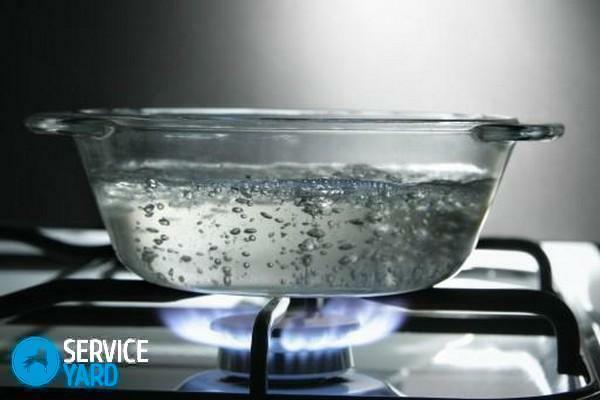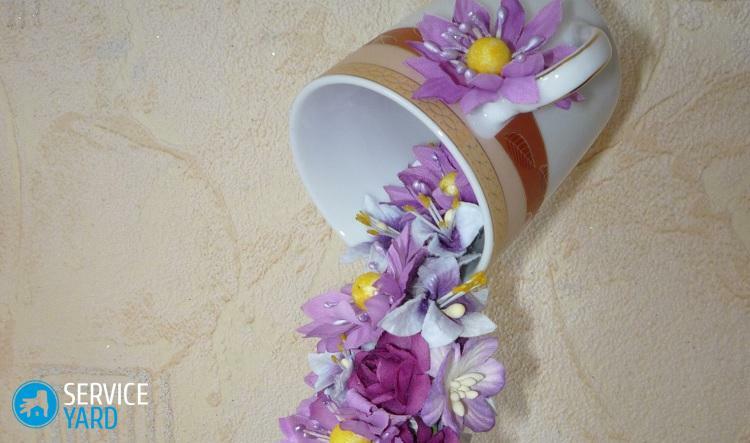Traditionally decorated with brick facades. For interior decoration used other, more aesthetically interesting materials, the easiest of which is plaster. But with the emergence of new trends in the design of a brick in the interior have been paying more and more attention. His carelessness and the original invoice organically flow into a number of stylistic directions. Veneered brick walls in this expensive cost, and high-grade masonry "eats" a lot of extra space. a number of high-quality imitations that are visually difficult to distinguish from the original was created. Decorative tiles under a brick is used for decoration of homes, both inside and outside. Depending on the type of material that has been used for its manufacture, it can not yield strength even original. Let's talk about how to properly perform the installation of tile and consider the latest mobile versions of decorating the walls.
Content
-
material variety
- flexible tile
- of plaster
- Paving
- ceramic
- Styles with a bricklaying
-
The idea of using the brick tiles
- In the hallway and the hallway
- In the living room
- In the kitchen
- In the bedroom
- In the bathroom
-
Floor technology
- Substrate preparation
- Laying tiles
- conclusion
material variety
Tiles for decoration, imitating brick, made of different materials. Some prove to be long-lived, while others have a more presentable and unusual appearance. The main classification includes five types:
- Ceramic tile. Traditional ageless embodiment which has passed by a long time and showed excellent results for durability.
- Clinker. Frost-resistant material that is often used for decoration of facades of houses.
- Gypsum tile. Very attractive, amenable to adjustments at the manufacturing stage material.
- Concrete tile. Made by pouring the liquid formulation in the form of technology before it is fully cured. Concrete is durable, durable, easy to paint, but very "cold" room. Generally it refers to materials for roughing and finishing is used to create other types of tiles - paving.
- Flexible. Innovative variant which has a small thickness, but protects the wall surface.






To create a decorative bricks are used not only these materials. In the course are different solidifying the mixture, which can be made from natural, synthetic components.
flexible tile
Flexible tile really excellent bends and its name is not a publicity stunt to lure buyers. According to the degree of plasticity, it resembles foam. Is made of sand and material with the addition of acrylic pigments. The main advantage of flexible tiles lies in the possibility to carry out laying in the corners without disturbing the integrity of the fragments, that is simply folded and fixed to the wall. When you need to cut some part for processing the edges of the material can be easily cut. Flexible tile authentically mimics a brick, and protects the surface of the wall. It can be used as a finishing material for decorating the facade of the house, but the difficulty in removing contaminants from the surface becomes a serious obstacle for such decorations. Flexible tile is environmentally clean and non-flammable, but it can not be processed with alkali detergent in the composition.

Despite its apparent "unreliability" the material will last for many years, and its installation will seem easy, even for beginners.
of plaster
Option is popular because of its low price, but on quality it is much inferior to ceramic and clinker. Gypsum tiles can be made with your own hands, after having bought the form for pouring. The surface of each piece will have to handle the special composition. Unfortunately, the protective layer will not be able to save material from the damaging effects of moisture for a long time. Besides, any mechanical impact (up to punch) cause cleavage fragments. Gypsum is beautiful, but completely impractical. It can be used only as a decoration for interior decoration in the rooms where the air is always dry. Due to the fragility of the material, the surface after fabrication can be decorated with nicks and irregularities that are characteristic of this masonry.
See also:How and what to decorate a blank wall: more than 100 photo ideas

Paving
Clinker referred to as bricks. It is based on a mixture of refractory clay and shale feldspar, which after calcination at ultrahigh temperatures are incredibly hard. Original title material gave the Germans because of the special sound that emit elements in collision with each other. Paving tile is universal and applies to both external and internal finishing works. The material is characterized by all the advantages of ceramics, but it is stronger and more durable.

ceramic
Ceramic tile is no different from the usual tile, which trim the kitchen and bathrooms, in addition to the rectangular brick shapes, rather than the standard square. Material manufactured from a special grade of clay which is mixed with silica particles, pigments, and carbonates. Ceramic tile has a relatively low weight, color stability even at constant contact with sunlight, it does not react to changes in humidity in the room. Material is durable and robust. Ceramics can have a different texture, but the most popular choices are matte and glossy surfaces. Color Range allows you to choose the tiles for a specific range of interior.

Styles with a bricklaying
Masonry is not for all directions. It has become a kind of calling card of the loft. "Combed" industrial style at the expense of the interior decor emphasizes brevity and close "relationship" with the shop premises. Tile generally has a rough surface and simulates gritty brown brick. In minimalism, this lining will decorate the practical situation with no frills. For this direction is selected materials quiet tones (gray, white) with a smooth surface. The tech also used neutral shades. Stylish solution becomes brick tile with a glossy surface, which imitates metal. With country and Provence version of the combined "with difficulty." In the style of the French countryside used bricks only gentle tones, and country accept the rough texture, as in the loft. The Gothic direction tiles used with Venetian stucco effect, i.e. with a surface that chaotic stains like marble.






The idea of using the brick tiles
Brick tiles decorate only some parts of the walls in the rooms. If this material to coat the entire surface, the design will be to put pressure on the household and cause psychological discomfort. In rare exceptions decorative tiles are used to finish the whole room when you need to realistically recreate the medieval interior. Such decoration is appropriate to look only in specific areas, for example, in the fireplace.
In the hallway and the hallway
In the hallway or corridor with decorative bricks emphasize the individual elements. Most often it is a doorway or a large mirror. material also decorate the open corners. Very popular technique of "ragged edge" in which the edges of masonry have a sloppy appearance. Such "negligence" perfectly combined with a simple interior, diluting the situation. If the hallway or corridor close, it is recommended to use the material light shades.






In the living room
Stylish and comfortable element in the living room fireplace is considered. To make this room look more colorful land, its decorated with brickwork. Thus only ceramic or clinker can be used, since the material must be refractory. If the fireplace is located in the corner tiles adorn the adjacent part of the wall. Original solution would be decorating two surfaces located opposite each other. So that even a dark brick did not create a gloomy atmosphere of the sofa hung a large, bulky mirror, but rather establish a TV. With this finish will blend in a snow-white sofa, a coffee table made of glass and soft carpet, completely covering the floor. Also tiles adorn the accent wall, on which is placed a TV and paintings by a group of photos, posters. In rare cases, the building blocks are narrow vertical strip from the ceiling to the floor. Effectively this solution in combination with a simple plaster. Unconventionally looks combination of this with his imitation brick. In this first rough texture contrast with the smooth surface and the second view manicured. Authentic brick adorn the top of the wall, and from the line at eye level, it is lined with decorative tiles.
See also:We produce liquid wall with their hands: instructions






In the kitchen
Decorative tiles often adorn the walls, whose kitchen is located. If this clearance is too much "push" to a man, he limited the apron, which is traditionally made of ceramic. The original goal is to create a "niche" under the hood, which would mimic a similar element above the oven. Its surface finish with aged bricks. If the kitchen combined with dining area, the room can be zoned by a false wall. In order not to spoil the visual perception of space, it is recommended to build this partition to the ceiling, and the height of a man's height. Kitchen decorations can not be used gypsum, as the material is quickly coming into complete disrepair. The spacious rooms with an island layout is recommended to use a black brick with light-colored seams in masonry, which will contrast with white gloss and bar combined with the dark set. With the help of decorative tiles can be emphasized particularly irregularly shaped kitchen. To decorate small spaces resorted to cunning move: use the mirror blocks, which visually increase the space, expanding its borders. Suitable such an option to the loft and high-tech. If the interior supplement elements made of metal (chrome plated surface), this effect can be doubled.






In the bedroom
In the bedroom are advised not to use the building blocks of catchy shades. In the room, which is designed for rest and sleep, it is better to use pastel colors and white. Masonry trim accent wall at the head of the bed or in front of it. Complement the design of a pair of paintings, stylish lamps or stone letters. White brick harmonises with plaster or wallpaper soft, decorated with floral ornaments. If you use a material with a relief surface, which has roughness emphasize its more decorative lighting system. For a modern bedroom with a hanging bed used white tiles under brick, which trim the wall at the head of the bed. Complement the decor long shelf open a book and panel curtains to match. The minimalist bedroom wall hanging abstract painting and plaster surfaces are decorated with twine plants in hanging pots. In rare cases, when you plan to install the fireplace, it is placed between the windows in the room. This section of the wall decorated with dark brick, which contrasts with light curtains, but combined with the ceiling beams of wood. This design solution is close to the chalet style. To emphasize the design negligence, can not buy the painting and draw graffiti on the wall directly.






Brick surface can participate directly in the zoning of the room combined. Thus stylish addition will partition of frosted glass or plastic.
In the bathroom
Traditionally tiles are used for finishing the bathroom. Ceramic tiles under brick does not yield this material in their characteristics. The bathroom is usually trim only one wall that will accent. In small rooms it is impossible to apply the material in dark colors. Organically complement the tile flooring that simulates the texture of the plaster. This room is not advised to use stacking "ragged edge". Stylish look is a combination of two types of tiles:
- Simulating a simple brick.
- Since a mirror surface.
See also:Decorative panels PVC

Reflecting fragments of "weave" in the usual masonry tiles over the sink, thus creating asymmetric mirror, and some add some fragments at the site where the shower is located.
Floor technology
Laying technique involves four steps:
- Preliminary work and surface treatment.
- Application of the composition.
- Fixing tiles.
- The final grouting.

With the installation of any type of tile to handle even the novice. You first need to conduct measurements of the room and calculate the right amount of material. When laying the individual building blocks need to be guided by a straight line, which is applied to the wall in order to obtain flat ranks.
Substrate preparation
The wall must be cleaned of dirt or old paint layer, dismantle previous finishing material. In the presence of large defects they need to seal the filler and carefully smooth the surface. After drying, the composition additionally applied primer layer. It will provide a good coupling between the adhesive composition and the wall. After the primer has dried (preferably to wait hours after application) of its cover fastening material. construction adhesive or grout may act in his role. The layer thickness must not exceed 0.5 cm. The composition may be applied only on a wall, on the back of the tile or to use both at the same embodiment. Thus the treated piece to be decorated surface area should not exceed 0.5 m. Note that the composition may solidify rapidly so glue will quickly. Fireplaces used for lining cement slurry as other substances can not withstand heating.

If the reverse side of the fragment is smooth, using a spatula with serrated edges for the application of glue or cement mortar. In cases where the "wrong side" tile is a relief, then use the tool with direct working part.
Laying tiles
In any type of stacking is recommended to move from corner to center. Each fragment firmly pressed against the surface and if necessary adjusting its position until tile bricks are not fixed. Excess adhesive or grout should immediately clean the squeegee. To get the same joints, it is recommended to use rubber spacers. Options for laying decorative tiles are the same as that of conventional bricks. Among the most aesthetically beautiful note:
- Masonry stretcher with an offset of 1/2 and 1/4. This is the traditional option, which is found in typical homes.
- Chain masonry. It is characterized by the alternation in each row of long bricks with a square fragments that are equal to their side.
- Phillips masonry. In the first row of plates are placed fragments of the whole, and in the second - their halves. The main thing that small pieces are located directly above the center of the big ones. Thus are obtained brick "crosses".
- Bonder masonry. All ranks are made up of halves, which are offset in stretcher version.






Also in demand Silesian, Gothic, Flemish and chaotic masonry. In the latter case, each brick is as wish designer. The result may be very original composition. Once the tiles will be fixed, it is necessary to carry out grouting them to acquire a neat appearance. For these purposes special compositions based on cement or epoxy resins. After drying its excess solution was removed from the tile surface with a damp cloth.
conclusion
Not necessarily decorate the room with only one kind of tiles. The bricks can be combined in color and texture. Using a clutch of different fragments, performing the room zoning or highlight individual design elements. The combination of colors is typically performed on the basis of analogy, since contrast composition can add "gravity" space. Color bricks must find continuation in the furnishing and floor coverings.



